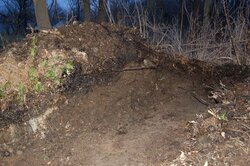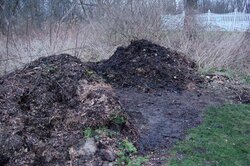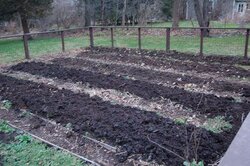I usually do this in the fall, but sometimes I don't get around to it and it gets done in the spring before planting. This year I did it in mid January. I put it off as long as possible, but eventually ran out of excuses.
Anyway, the point of this thead is that you don't need to put a lot of work or thought into an endless supply of compost, as long as you've got the raw material and room to store it.
This pic shows my compost pile being excavated for the good stuff at the bottom. In the picture, it's that brown layer that follows the contour of the pile, extending halfway up. It looks a lot like dirt. The stuff on top is mostly leaves and grass clippings from fall cleanup.
Anyway, the point of this thead is that you don't need to put a lot of work or thought into an endless supply of compost, as long as you've got the raw material and room to store it.
This pic shows my compost pile being excavated for the good stuff at the bottom. In the picture, it's that brown layer that follows the contour of the pile, extending halfway up. It looks a lot like dirt. The stuff on top is mostly leaves and grass clippings from fall cleanup.




